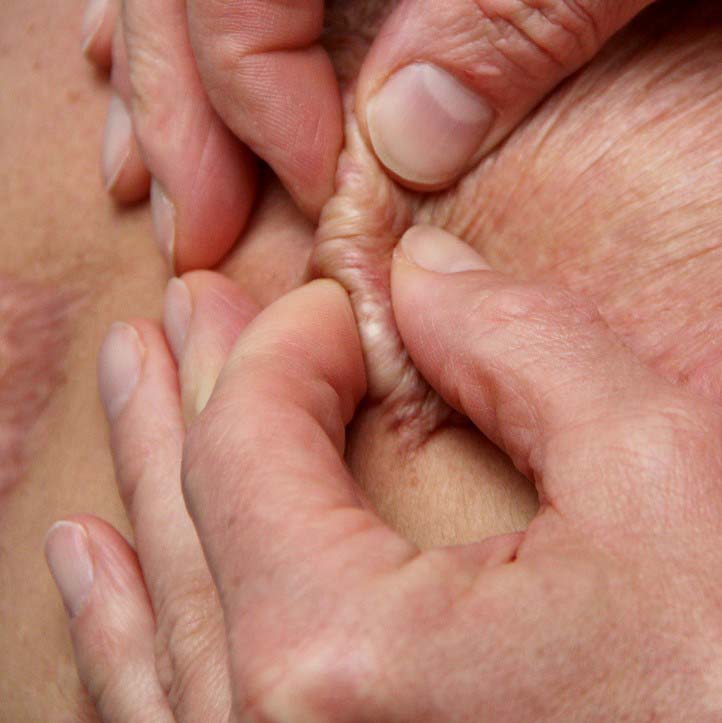Scar Massage
Why Scar Massage?
Throughout the scar healing stages (scar maturation) scars can become hypertrophic, hard, tight and stuck. Soft tissue mobilisation is a manual technique; it involves movements/mobilisations with the hand on the scar without friction, it often involves circular movements or fold (lifting) movements. These techniques help to drain oedema and soften and loosen scars. It is important to receive scar massage from a scar specialist because the techniques are not the same as normal body massages. When deciding on which techniques to use and how long for or how firmly to do them it’s important to consider the stage and state of the scar. Therapy time may vary from 5 up to 30 minutes depending on the size, location, and maturity of the scar. Scar massage is normally used together with other treatments such as silicone, exercise and pressure therapy.
With many scars the scarring is not limited to the skin, deeper structures below the skin may also be tight or stuck and various deeper tissue mobilisation may also help.
Main improvements
Possible beneficial effects of massage:
- Reduced pain
- Reduced scar thickness
- Reduced itch
- Increased pliability and flexibility
- Increased vascularity that promotes local circulation which can increase skin temperature and promote the speed of tissue repair
Adverse effects
Adverse effects that may occur:
- Irritation of the skin due to the massage or the lubricant used
- Blisters and skin breakdown, especially when the epidermis is fragile or friction is applied
Scar Massage with Lubricant
Scar massage with lubricants is used for:
- Hydration of the skin. Improved hydration reduces itching and inflammation.
- Decreased stress and pain, this may also help improve your ability to tolerate tolerance other rehabilitation treatments.
Soft tissue mobilisation without lubricant
Mobilisation without lubricant aims to:
- Mobilise hardened tissue
- Mobilise adherent (stuck) scar
F.A.Q.




